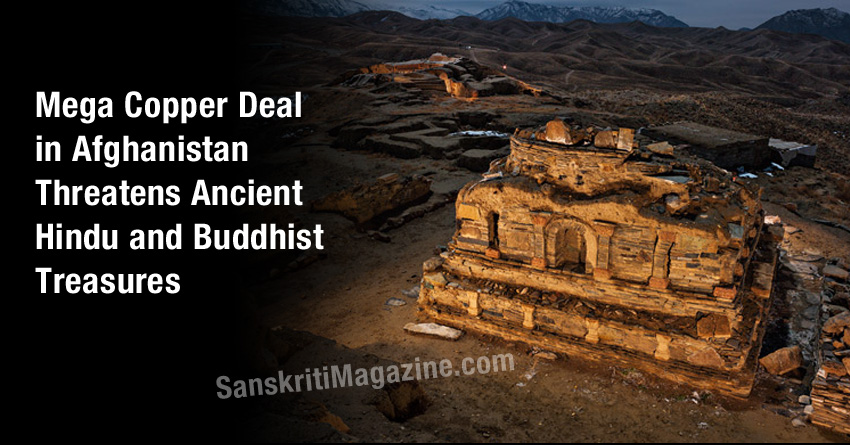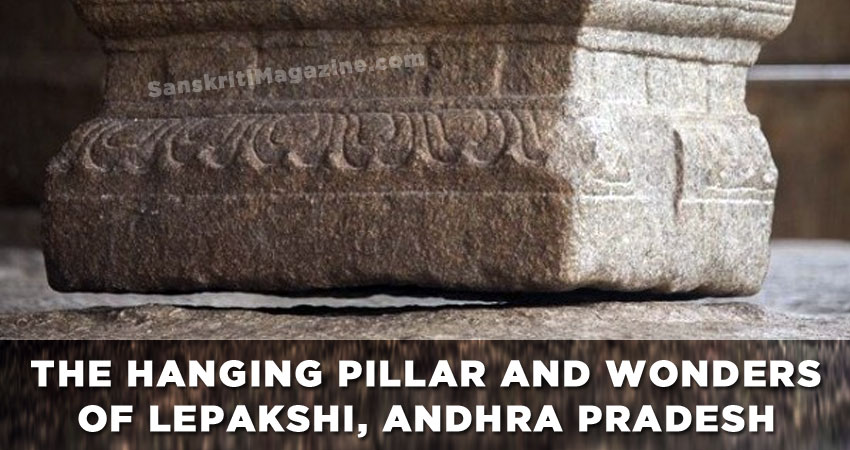Under threat of Taliban attack, archaeologists are excavating a spectacular Buddhist complex before it’s obliterated by a huge mining operation.
About an hour’s drive along the Gardez highway south of Kabul, beyond the bustling shops, the trucks spewing diesel exhaust, and the clatter of donkey carts, there is a sharp left turn onto an unpaved road. In a district of Logar Province friendly to the Taliban, the vicinity has been shaken by roadside bombs, intermittent rocket attacks, kidnappings, and murders. The road continues along a dry riverbed, past small villages, paramilitary roadblocks, sentry towers, and an empty, blue-roofed compound cordoned off with concertina wire.
A little farther on, the view opens onto a treeless valley creased with trenches and exposed ancient walls. Over the past seven years a team of Afghan and international archaeologists, supported by up to 650 laborers, has uncovered thousands of Buddhist statues, manuscripts, coins, and holy monuments. Entire monasteries and fortifications have come to light, dating back as far as the third century A.D. More than a hundred check posts surround the site, which is patrolled day and night by some 1,700 police.
The excavation is by far the most ambitious in Afghanistan’s history. But the security wasn’t put in place just to protect a few scientists and some local workers. Buried below the ancient ruins is a lode of copper ore that extends two and a half miles across and runs a mile or more into the Baba Wali mountain, which dominates the site. It ranks as one of the world’s largest untapped deposits, containing an estimated 12.5 million tons of copper. In antiquity, copper made the Buddhist monks here wealthy; colossal deposits of purple, blue, and green slag, the solidified residue from their smelting, spill down the slopes of Baba Wali, attesting to production on a nearly industrial scale. The Afghan government hopes that copper will help make the country wealthy again, or at least self-sufficient.
Open Pit Mine Can Save Rather Than Destroy Artifacts
The name of this place is understated: Mes Aynak, “little copper well.” There is nothing little about Mes Aynak. In 2007 the Beijing-based China Metallurgical Group Corporation (MCC), leading a state-backed consortium, won rights to extract the copper here on a 30-year lease. (China is ravenous for copper: It now consumes half the world’s supply.) The company made a bid worth more than three billion dollars and promised to provide infrastructure for this isolated, underdeveloped district, including roads, a railway, and a 400-megawatt electricity plant. Afghan officials estimated that the mine would provide a $1.2 billion infusion into the country’s fragile economy, dependent since 2002 on foreign assistance and now facing a seven-billion-dollar annual deficit.
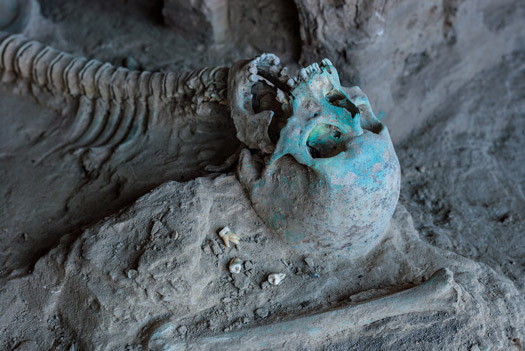
Mes Aynak’s archaeological potential has been known for decades. When the Chinese deal became public, Afghan cultural heritage advocates demanded that the place’s ancient treasures be excavated and recorded properly before they were lost to an open-pit mine. But the artifacts were already in danger: not from destruction by the Taliban, but from being plucked out piecemeal by looters, lost to science. “If it will not be destroyed by mining, it will be destroyed by looting,” says French archaeologist Philippe Marquis, who directed excavations at the site from 2009 to 2014. Better, he says, to document as much as possible now in a systematic way.
Despite the heavy security, present-day dangers have delayed the mine’s development. The blue-roofed compound, built for Chinese engineers, was abandoned after a series of rocket attacks in 2012 and 2013. Land mines left behind by the Soviets in the 1980s and explosive devices left more recently by the Taliban and al Qaeda pose yet another danger, and eight mine-clearing specialists were killed by the Taliban in 2014. (When Afghanistan was under Taliban control, Mes Aynak was the site of an elite al Qaeda camp where four of the hijackers who took part in the 2001 attacks on New York City and Washington, D.C., underwent training, according to the 9/11 Commission.)
Add to the security challenges the logistical complications—the lack of a railway to transport the copper out of the region and a serious scarcity of water—and it’s no surprise that mining, originally projected to start in 2012, has not yet commenced. In 2013 the MCC began to back off from some terms of its contract, and the two sides have yet to renegotiate the agreement. It’s unlikely that any extraction will take place before 2018, if then.
In a Troubled Region, a Harmonious Past
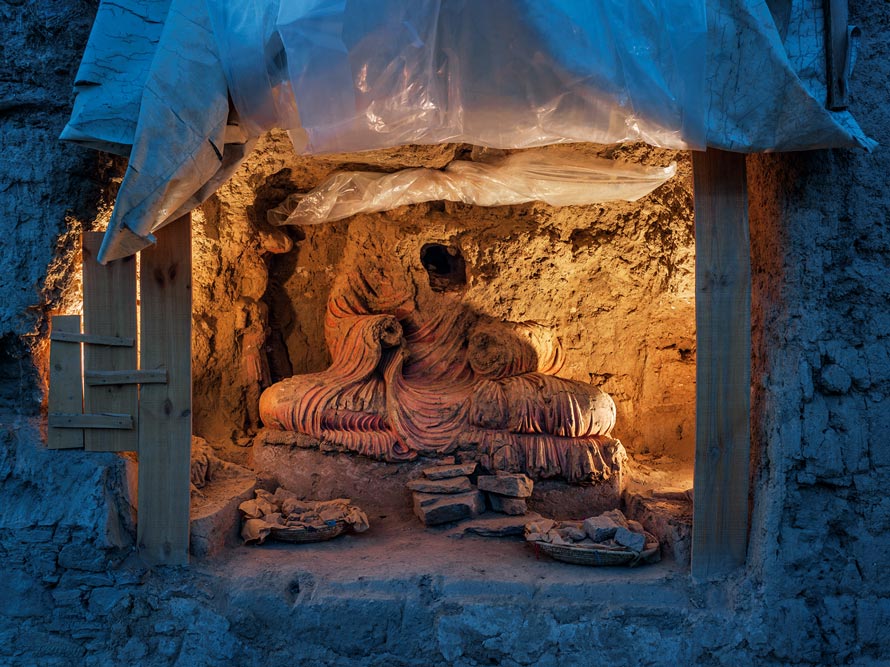
PHOTOGRAPH BY SIMON NORFOLK
The delays have given archaeologists considerably more time to excavate than they had expected, though with a greatly reduced workforce. The past they’re revealing presents a stark contrast to the violence and disorder of their own time. From the third to the eighth centuries A.D., Mes Aynak was a spiritual hub that flourished in relative peace. At least seven multistory Buddhist monastery complexes, containing chapels, monks’ quarters, and other rooms, form an arc around the site, each protected by ancient watchtowers and high walls. Within these fortified complexes and residences the archaeologists have uncovered nearly a hundred schist and clay stupas, Buddhist reliquaries that were central to worship. The stupas range in size from monumental to easily portable.
Mes Aynak was also a key economic center in Gandhara, a region spanning what’s now eastern Afghanistan and northwestern Pakistan. Gandhara was a civilizational crossroads, a place where the great religions of Hinduism, Buddhism, and Zoroastrianism met and where ancient Greek, Persian, Central Asian, and Indian cultures melded. It was the “center of the world,” in the words of Abdul Qadir Temory, the lead Afghan archaeologist on the project.
In the first centuries A.D. the Gandharan Buddhists revolutionized the region’s art, refining an aesthetic sensibility that had synthesized the vestiges of earlier centuries of conquest. They were among the first artists in the world to depict the Buddha in realistic, human form—a Hellenistic innovation from the days of Alexander the Great, who first marched through Afghanistan in 330 B.C. At Mes Aynak chapels have been uncovered with double-life-size Buddha statues still bearing traces of their red, blue, yellow, and orange painted robes; caches of gold jewelry; fragments of ancient manuscripts; and walls adorned with frescoes. One niche yielded a schist statue featuring a rare depiction of Siddhartha Gautama before he became the Buddha.
Cascades of copper coins from the third to seventh centuries A.D. have also spilled from the site, collected from the floors of dwellings and from where they had been carefully cached by the hundreds. Many bear the image of the second-century Kushan ruler Kanishka the Great. He may or may not have practiced Buddhism—but he welcomed it and other religious traditions in his empire, notably fire-worshipping Zoroastrianism, which originated in ancient Persia. Many of the coins found at Mes Aynak depict Kanishka on one side and either a seated Buddha or a Persian deity, such as Ardokhsha, a goddess of fortune, on the other.
Delays in the copper mining have given archaeologists considerably more time to excavate. The past they’re revealing presents a stark contrast to the violence and disorder of their own time.

“Kanishka’s coinage was valued from Rome to China,” says longtime Kabul residentNancy Hatch Dupree, 87, the U.S.-born grande dame of Afghan heritage scholars. “There are 23 gods and goddesses on Kushan coinage. This symbolizes tolerance. This was a time when people were broadening their thinking.”
Though much is known about ancient Buddhism’s links to trade and commerce, little is known about its relationship to industrial production. This is where Mes Aynak may be able to fill in important blanks, hinting at a more complex Buddhist economic system than has been previously understood. Unlike the far better known Bamian—an ancient Buddhist pilgrimage site and Silk Road caravan center 125 miles to the northwest, formerly home to two colossal, sixth-century Buddha statues carved out of a cliff face, blasted to rubble by the Taliban in 2001—Mes Aynak seems to have thrived primarily because it was a copper extraction and production hub, a Pittsburgh to Bamian’s New York. The sacred monastic complexes are right on top of the copper ore.
“I do not know of any other site where monasteries coexisted in perfect [symbiosis] with production or industrial centers,” says Zemaryalai Tarzi, an Afghan archaeologist who first visited Mes Aynak with a French team in 1973. “These kinds of tight relationships between Buddhist monasteries and the industrial or commercial exploiters of natural resources have no precedent.”
An Abundance of Riches
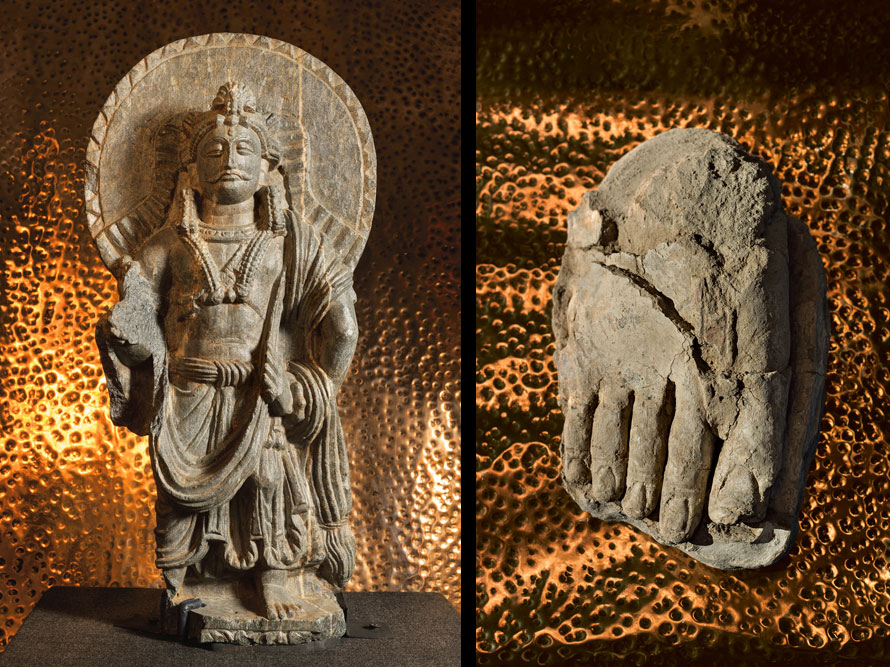
(PHOTOGRAPHS BY SIMON NORFOLK; PHOTOGRAPHED AT NATIONAL MUSEUM OF AFGHANISTAN, KABUL (LEFT); PHOTOGRAPHED AT MES AYNAK, COURTESY AFGHAN INSTITUTE OF ARCHAEOLOGY (RIGHT))
Puzzling out the full meaning of Mes Aynak will require decades—and a new generation of archaeologists. After earning his degree at Kabul University, Sultan Masoud Muradi, 24, the son of a Kabul construction worker, competed to take part in excavations at the site. He’s proud that he and his colleagues represent different ethnicities and work easily together—no small matter in a country riven in the 1990s by a horrific civil war among mujahideen groups divided along ethnic lines. “We have 5,000 years of history, and for Afghanistan’s new generation, it’s very important to know about it,” he says, holding a small shovel while taking a break from digging. “Otherwise we are just famous for terrorism and poppy production.”
Mes Aynak’s landscape is completely deforested today, and it’s possible that ancient copper smelting played a role in the area’s denuding—which in turn may have ended copper production. Huge quantities of wood had to be burned to make charcoal, and up to 20 pounds of charcoal could be required to extract a single pound of copper from ore. Enough was needed to heat a fire to almost 2,000 degrees Fahrenheit and keep a small furnace roaring up to several days.
Thomas Eley, an archaeometallurgy specialist from Great Britain who did fieldwork at Mes Aynak in 2012, has detected a shift in its copper production over time from a relatively efficient form of smelting to a slower and more painstaking process—the opposite of what he’d expected to find. But the more efficient process, known as tapped smelting, also happens to be more fuel intensive. As the supply of trees for making charcoal dwindled, the smelters could have been forced to fall back on the slower method.
Processing so much copper also required a reliable water supply to wash the ore and quench white-hot ingots. That water probably came from mountain springs, shallow streams, and ancient underground irrigation channels called karez, which are still used in parts of Afghanistan. One 30-foot-long karez has been excavated in the northern section of the site, probably part of a network of such channels. The ongoing deforestation could have reduced the area’s rainfall, making water even scarcer.
A paucity of water remains a concern in this drought-prone region, and a major obstacle to future mining. Integrity Watch Afghanistan, a Kabul think tank, reported in 2013 that villagers around Mes Aynak complained that the water table dropped by more than six feet after preliminary drilling. “When copper production starts, it will require seven million liters [1.85 million gallons] in one eight-hour shift,” says Javed Noorani, who authored the Integrity Watch report. “The area is already water deficient.”
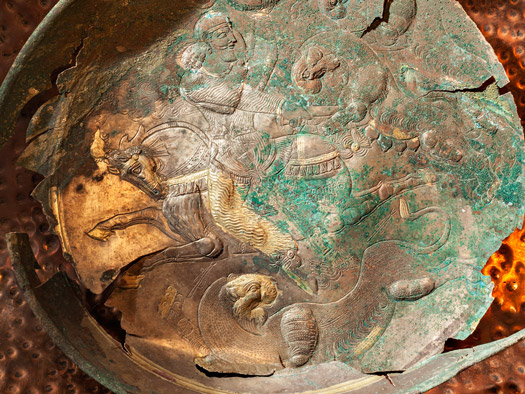
The archaeologists must cope with a problem not of scarcity but of overabundance: The rate at which the excavation has proceeded risks outpacing the ability to store and protect everything coming out of the ground. “Excavation is easy,” says Omar Sultan, Afghanistan’s former deputy culture minister and a Greek-trained archaeologist. “Safeguarding is the hard thing to do.”
More than a thousand of the most important pieces have gone straight to theNational Museum of Afghanistan in Kabul. “Unfortunately we cannot accept all the artifacts,” says Omara Khan Massoudi, for many years the director of the museum. “There is no place for them.”
For now the thousands of Mes Aynak objects that aren’t at the museum sit in temporary storage at or near the site. Most have not been analyzed or studied. Massoudi and Sultan talk of erecting a local museum someday, but more likely, at least in the short term, there would be a virtual museum and online reconstruction to preserve Mes Aynak’s memory after the mining begins.
But first Afghanistan’s security challenges must be resolved. And in the long term more mining delays could pose more dire threats. Mes Aynak’s security depends in large part on ensuring that local men, vulnerable to the lure or coercion of the Taliban, stay gainfully employed. Many resent having been displaced from their villages to make way for the copper mine. The World Bank, which has been supporting the archaeological work through a project with Afghanistan’s Ministry of Mines and Petroleum, estimates that the mine will eventually provide 4,500 direct jobs and many more thousands of indirect ones, though there’s growing skepticism that the jobs will ever materialize.
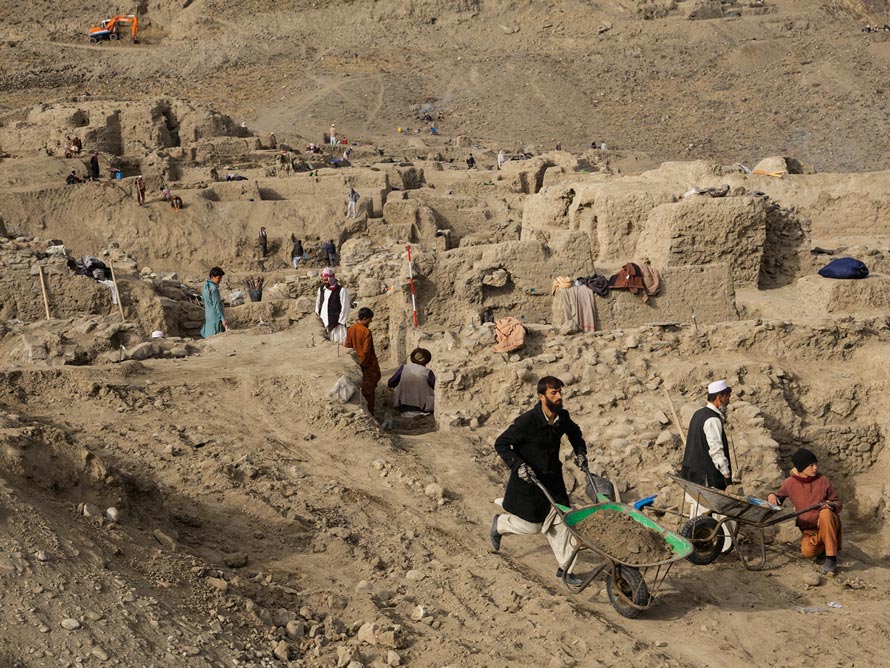
Over the years a few hundred men have been paid generously by local standards to wield pickaxes and shovels or do other menial work at the archaeological site. But “if you have no food or salary, when your children are hungry, you’ll do anything,” says Habib Rahman. “Maybe join the Taliban. They pay a salary.” In 2001 the gray-bearded, 42-year-old father lost a leg to a land mine while herding goats. Now he walks with the aid of crutches two hours each way from his mountain village to wash pottery sherds at Mes Aynak.
The hardscrabble lives of locals like Rahman are not likely to change much in the immediate future. Many are ambivalent about the rich history they’re helping reveal, feeling no personal ties to a pre-Islamic past. It doesn’t help that the Taliban have threatened some workers, accusing them of promoting Buddhism. Still, there’s admiration for the achievements of the past. “My forefathers were Muslim,” says one 36-year-old laborer and Afghan Army veteran who gave his name only as Javed. “But we know a lot of generations passed through this ground. When I am working, I am thinking that here was a civilization, a factory, a city, kings here. Yes, this is Afghanistan also.”
U.K.-based photographer Simon Norfolk specializes in landscapes. Over the past 12 years he has explored through his work the meaning of the word “battlefield” and the many ways it can be interpreted.
Society Grant Satellite mapping of Mes Aynak was funded by your National Geographic membership.

